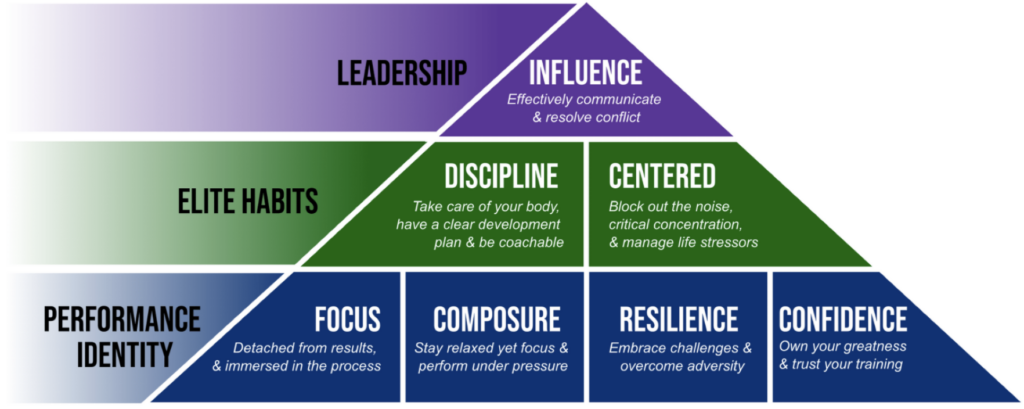You wouldn’t build a house without a blueprint – and in the same manner you shouldn’t work on your mental game without doing an assessment.
Here are the 3 steps to using the CEP Assessment to build your Mental Game blueprint:
STEP 1: Identify the Mental Skills to Build
One of the biggest problems with working on your mental game is that it’s hard to make it tangible – so in our assessment we break it down into 7 Mental Skills to make it clear what you are working on.
We assess each skill by reflecting on the percentage of time and energy you spend in that state compared to when you are not.
For example, resilience is based on how well you stay centred, embrace challenges, and bounce back from adversity versus having the emotional roller coaster of highs and lows, getting derailed, and going into downward spirals. This image breaks down the 7 Main Mental Skills you need to get into the zone:

Note that all the skills are inter-related and improving one will improve the others.
STEP 2: Clarify the Mental Blocks to Clear
This step is where we uncover any limiting beliefs that might be holding you back. By pinpointing the mental blocks to clear you can improve your mental game much more quickly.
The most common mental block is the Results Trap. An example question would be – How much do you agree with the statement: Winning is what makes sports fun?
The higher the rating, the more likely there is a Mental Block to clear in that category.
The questions here are like trick questions because there could be some truth within the statement – it doesn’t mean that winning is not fun.
But when an athlete or high-performer associates all their joy to the results, then they are holding onto a belief system or narrative that has lost touch with their love of the game. The image below breaks down the 7 Main Mental Blocks that may prevent you from getting into the zone:

STEP 3: Personalize the Mental Tools Accordingly
Now that you a good foundation set for your blueprint – the last step is to get bring in the fundamental tools and personalize them accordingly.
This is where you start to take action and bridge concepts to strategies. You need to embrace the creative process and find what works for you.
We have a full toolbox of tools, but here is the summary of the 4 fundamentals:
To summarize, you follow these 3 steps to build your mental game blueprint:
- Identify the Mental Skills to Build
- Clarify the Mental Blocks to Clear
- Personalize the Mental Tools Accordingly
If you are ready build your mental game with your own personalized blueprint – then click the link below.

